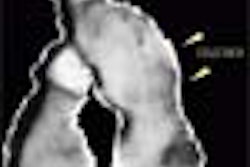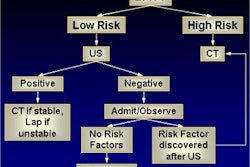MONTREAL - Women’s health specialists should consider incorporating ultrasound into their routine clinical examinations, as imaging offers a wealth of objective information about the health of the uterus.
"Is the uterus retroverted, is it irregular in its shape and contour, are there fibroids, is this ovary normal in shape and size; if it isn’t, is it cystically enlarged or solidly enlarged? This is all objective information that can be replaced in a matter of seconds with an image if you have the equipment and the know-how," said Dr. Steven Goldstein at the congress of the World Federation for Ultrasound in Medicine and Biology and the American Institute of Ultrasound in Medicine.
A bi-manual palpation garners both objective and subjective information, said Goldstein, who is an ob/gyn and the director of gynecologic ultrasound at the New York University Medical Center in New York City. The subjective information, such as assessing the mobility of the uterus, or evaluating for tenderness, cannot be replaced by imaging. Imaging with ultrasound yields more objective information.
"(An ultrasound exam) saves time in consultation because the patient has seen the images. It can also save lots of time for the patient, who gets her suspected mass imaged immediately, rather than having to make a special ultrasound appointment. By putting ultrasound in the hands of the clinician at the time of the encounter you are functioning at a higher level," Goldstein said.
"You have to let go of the notion of ultrasound examination by referral with an indication that generates a standard gynecologic guideline scan, and a full report with a separate charge," Goldstein added.
Currently, Goldstein does not charge for the ultrasound exam. However, he has invested about $60,000 in three ultrasound units in each of his examination rooms. Although he has not done a formal cost review, Goldstein said the full payment he receives for the ultrasound exams he performs for indications offsets the cost of routine imaging. Goldstein did not address the technical challenges associated with performing and interpreting ultrasound exams, which tend to be operator-dependent.
By Kate JohnsonAuntMinnie.com contributing writer
June 4, 2003
Related Reading
Aloka launches new OB ultrasound scanner, April 16, 2003
Sonologists learn from others’ mistakes in ob malpractice suits, December 10, 2002
Turf Wars in Radiology IV: Radiologists, ob/gyns sound off on fetal imaging, September 26, 2002
Copyright © 2003 AuntMinnie.com



















